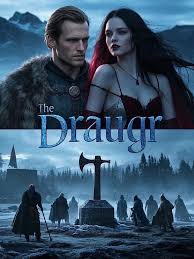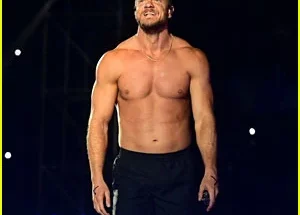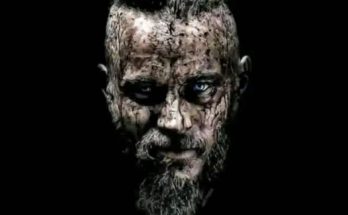The streaming giant Netflix has dropped a trailer of epic proportions for its latest Vikings‑era saga, “Vikings: Legacy of Ragnar,” and fans of Norse heroism, brutal battlefields and sagas of blood and glory are buzzing. The trailer opens with a sweeping, snow‑blasted landscape, the roar of wind and the crunch of iron‐shod boots stepping onto the soil of Kattegat, the mythical Norse stronghold where legendary warriors once made their stand. Right away, the tone is set: this is not a gentle retelling, but an immersive plunge into the heart of Viking legend, myth and raw power.
From the first frames, the visual design draws you in. Horn‑blasted longships crest waves beneath an icy sky; shield‑walls form on the shoreline and the familiar triangular houses of Kattegat’s longhouse settlement silhouette against dying light. The camera pulls in on a row of war‑ready figures, axes and spears catching firelight, the glint of leather and iron, and then a voice‑over—gruff, commanding—intones something about legacy, bloodlines, the forging of future kings. While no official cast list is yet wholly detailed in the trailer, the sense is unmistakable: the warriors of Kattegat are back, and they have come for more than just raiding—they’ve come to reclaim their birthright.
What makes this trailer standout is the way it bridges familiar Viking tropes with fresh cinematic intensity. We see glimpses of epic set‑pieces: shields shatter, horses gallop through snowfall, arrows arc through mist, and intense close‑ups of eyes—both fierce and wearied. The natural world itself looms as a character: wintry forests, raven‑flecked skies, the omnipresent sea. Yet the human drama shines through—familial tension, rivalry, the weight of legend. The title, “Legacy of Ragnar,” suggests a passing of the torch, or the reckoning of what the founding heroes built and what the next generation must either preserve or destroy.
The trailer evokes the cultural weight of the original saga. Much of the impetus seems derived from the legend of Ragnar Lothbrok (Loðbrók)—the famed Viking chieftain whose exploits in the Anglo‑Saxon world and in Norse lore have been dramatized time and again. For viewers who followed the earlier series Vikings, the choice of Ragnar’s name in the title alone stirs recognition and expectation. The new show appears poised to explore not just Ragnar’s story, but the ripples his life left behind: children, prophecies, blood feuds, and the heavy mantle of legend. The trailer hints at this: we see a torch carried across water, a daughter’s face marked by battle‑scars, a son watching a father fall. These are the emotional stakes underpinning the epic visuals.
From a production standpoint, the trailer also showcases slick modern cinematography—sweeping aerials over fjords and encampments, slow‑motion combat swings, a palette of cold steel and warm firelight. The musical score builds slowly, a low drum‑beat beneath chanting voices and horns, escalating into full‑throated battle cries. The result is immersive—less episodic documentary, more cinematic event. It signals Netflix’s commitment to each “event series” feel: big budgets, theatrical scope, and high stakes.
There is a careful balance between the historical and the legendary in this trailer. The shapes of the huts, the longships and the shields reflect historical research, while the drama, the mythic voice‑over and the title’s promise of “legacy” lean into the mythic. Vikings themselves were storytellers—the sagas of the men and women who raided, traded and ruled are as much myth as history. In that sense, “Legacy of Ragnar” positions itself in that fertile zone: where history and myth converge. For fans of the previous saga and newcomers alike, the promise is that you will be drawn into an age of gods and men, of fate and choices.
Another strong aspect of the trailer is its world‑building hints. We glimpse not just Kattegat and sea battles, but the shifting alliances of clans, the confrontation of old and new faiths, the encroaching Christian kingdoms, the internal strife among Viking families. At one moment a group of monks closes a door as warriors gather outside; at another a young warrior trains with a wooden sword beneath the ancient trees—and his eyes burn with ambition. These glimpses suggest that the show will be richer than mere raiding and destruction; it will explore identity, power, faith, legacy. The title suggests that what these warriors fight for is more than land—they fight for stories, for memory, for what they will leave behind.
The trailer’s approach to characters is tantalizing. It opens with a matriarchal voice urging the younger generation to remember “where you come from,” then cuts to a darkened longhouse where an elder says: “The world remembers Ragnar. But you must write your own name.” These lines immediately raise themes of inheritance and individuality. Who will live up to the legend, who will surpass it, and who will fall trying? Among the warriors we see a woman—face half‑painted in war‑smoke—lifting an axe; next a youth in furs watching ships depart; then a hardened veteran closing his eyes in sorrow. We don’t yet know their names, but the trailer ensures we care.
Structurally the pacing is masterful. The opening minutes are quiet—wind, sea, the silhouette of Kattegat at dawn. Then gradually the tempo increases: a drumbeat, a line of spearmen, a charge over ice, a blood‑stained cloak flapping. The most memorable moment: a warrior raises his shield above his head on the prow of a longship, a thunder‑crash of waves behind him; cut to a crown being hammered; cut to a woman screaming a war‑cry while lightning flashes. The trailer ends on the titular text: “Legacy of Ragnar” over black, then the longship sailing into the mist with Kattegat behind. It leaves you with adrenaline, question marks and anticipation.
It’s worth noting how the trailer also taps cultural resonance. In an era where streaming content is global, this sort of mythic saga appeals beyond the Nordic countries—fans in Nigeria, for example, can feel the pull of legacy, of communal identity, of heroic journeys. The imagery of Kattegat resonates across cultures: the idea of a homeland, of ancestral roots, of forging one’s name. That may be part of why Netflix is investing in such global‑scale shows: they speak to the local and the universal at once.
Of course, with a trailer this promising comes expectation—and risk. Viewers will expect the show to deliver on its epic visuals, complex characters and grand themes. Previously, series like Vikings and its successor Vikings: Valhalla set high bars for world‑building, action choreography and character arcs. The trailer doesn’t give away the entire plot, but it sets a standard: if the show matches this level, it could become a landmark. If it falls short, the risk is that the “legacy” promised will feel hollow. But given the investment, the scale and the trailer’s confidence, it seems Netflix is aiming high.
Another dimension to highlight is how the trailer positions warfare and violence—not as mere spectacle, but as charged with meaning. We see the after‑effects of conflict: fallen warriors, grieving survivors, fires smoldering. A voice remarks, “Blood runs, men forget.” There is a sense that the show will probe the cost of legacy—the idea that you build a name, a kingdom, a legend—but who pays the price? Who is lost along the way? That kind of emotional spine elevates what could otherwise be another raid‑and‑plunder epic.
There are subtle hints in the trailer at spiritual stakes as well. Amid the clashing steel and roaring sea, we hear whispered references to “the old gods,” “new kings,” “the frozen throne of our fathers.” One shot lingers on an altar of runes carved into stone, another on a monk’s rosary being tossed into a sea. These signals suggest that the show will engage with belief—how faith shapes identity, how change comes, how legacy mutates. Given the historical moment of the Vikings—transitioning between Odin‑worship and Christianity—this is fertile ground for drama.
The trailer also plays on contrast: young warriors eager for glory vs. elders cautious of hubris; sea‑borne invaders yearning for home vs. those rooted in land; the luminous beauty of dawn vs. the savage darkness of battle. These visual and thematic contrasts deepen the trailer’s impact. The fight for Kattegat becomes not just a physical fight, but a fight for identity, for memory, for destiny.
For fans who watched the earlier Vikings series or its spinoff, the trailer offers recognition but also novelty. The longhouse of Kattegat returns. The ships return. The aura of Viking age drama returns. But the title “Legacy of Ragnar” signals that this is a fresh chapter—less about establishing the legend of Ragnar, more about examining its consequences and enduring effect. It invites audiences to witness the legacy, not just the legend, and asks: what does one generation owe to the next? Will the next seize the moment or betray it?
From a promotional standpoint, the trailer has all the hallmarks of event television. It teases big action scenes, rich production values, emotional stakes and a clear promise of scale. For Netflix, this is likely to be another marquee property in its catalogue—a show that drives subscriptions, social‑media buzz, fan theories, merchandise, everything. For the audience, it offers a promise of immersion into a world of steel and saga, one that invites not just passive watching but fandom, retelling, discussion.



